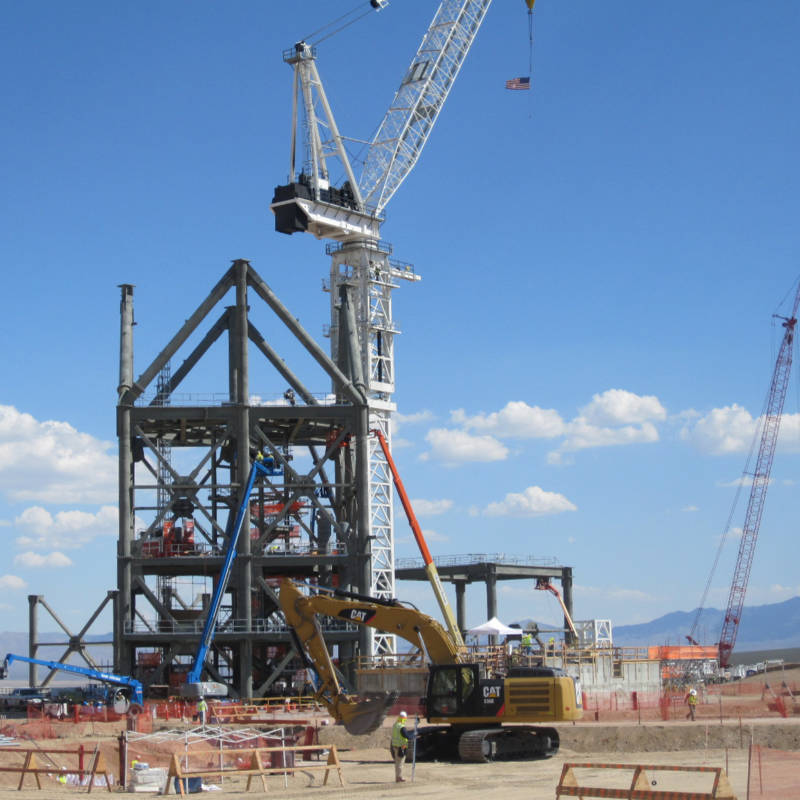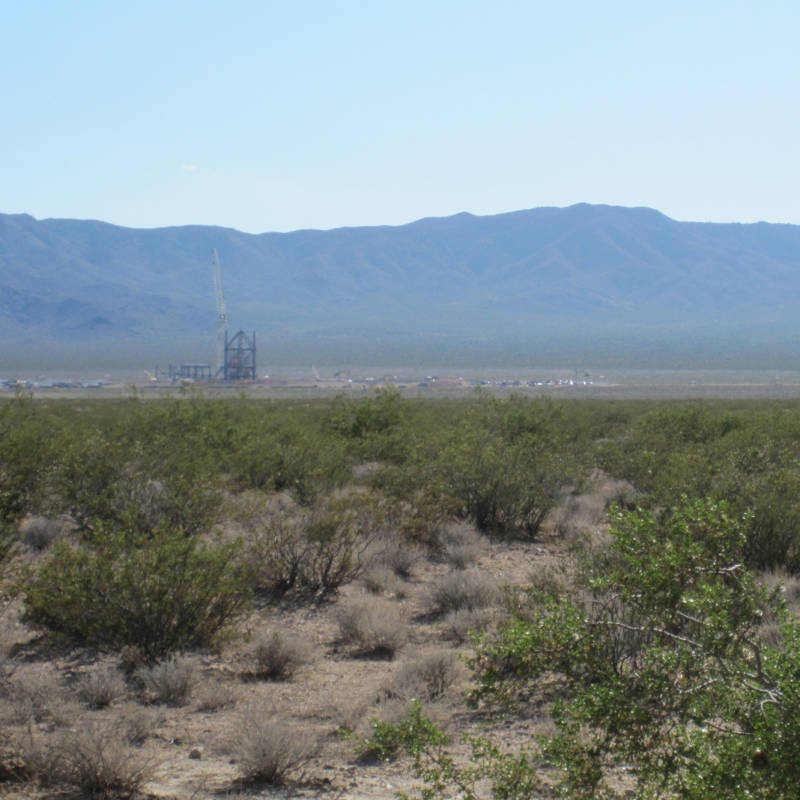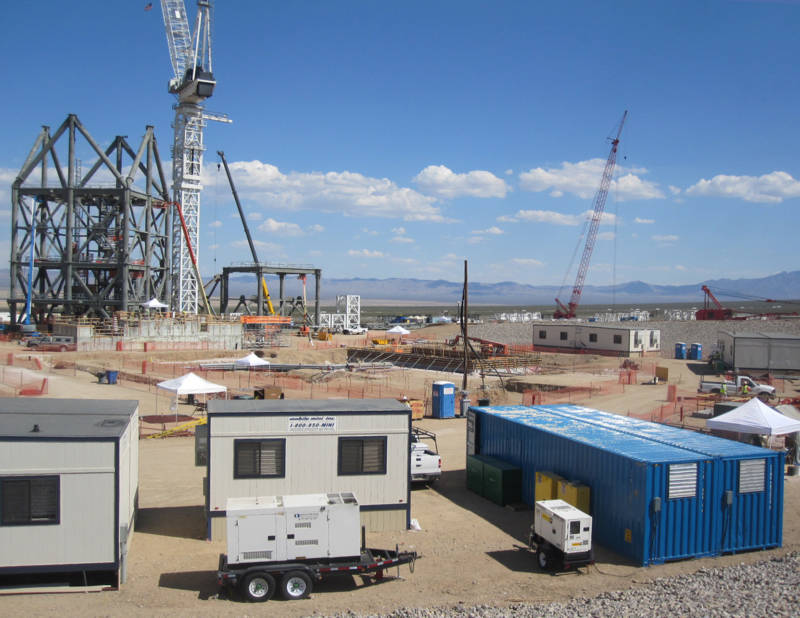
Construction of the Ivanpah site is reportedly on-schedule for completion in 2013
The National Clean Energy Summit 4.0 opens in Las Vegas on Tuesday, bringing policy makers and industry leaders from around the country together to “chart the course for the future of energy in America.” It’s also attracting lots of media, which is why on Monday Oakland-based BrightSource Energy opened the gates to the construction site of its 3,500 acre Ivanpah Solar Complex, which lies just over the California border, 45 minutes southwest of the Las Vegas Strip.
About 15 reporters donned hard hats and safety goggles in 100-plus temperatures to tour the active construction site in the Mojave Desert, along with officials from BrightSource, San Francisco-based construction company Bechtel Corp., and NRG Energy, which, along with Google, is the project’s main investor.
Touted as the the largest solar thermal plant under construction in the world today, the 370-megawatt array is expected to power 140,000 homes when it’s completed in 2013. BrightSource officials say that will double the total solar thermal capacity of the entire United States, and increase the world’s supply by about a third.

The site will eventually consist of three towers more than 450-feet tall and 53,000 “heliostats” dotting the surrounding acreage. Heliostats are the mirrors that focus the sun’s energy onto a boiler at the top of the tower, creating the heat necessary to generate steam and energy.
BrightSource’s Carlos Aguilar said that by employing a technology called dry cooling, which uses air to cool the plant instead of water, the site will use 97% less water than it otherwise would have. The project is slated to use about 100 acre-feet of water per year, which, he said, is about the amount used by 300 homes in a year.
“Three-hundred homes’ worth of water use for 140,000 homes’ worth of energy is quite a trade-off,” said Aguilar.
Another low-impact environmental strategy at the site includes efforts to keep the natural contours of the land intact, in order to keep the natural drainage system functioning. And according to BrightSource CEO John Woolard, because the plant is 50% more efficient than a photovoltaic installation, it’s able to encompass a smaller footprint.
“We’ve got probably the lowest environmental impact of any technology out there in solar,” said Woolard.

That hasn’t stopped activists from organizing pickets outside the company’s headquarters in downtown Oakland. Ivanpah has been the target of some environmental groups arguing that the solar installation threatens the endangered desert tortoise. In April, the Bureau of Land Management shut down construction on two sections of site when more tortoises were found on-site than expected. But in June, after further environmental review, the agency granted permission for work to resume. On Monday, Bechtel and BrightSource officials said the project is on schedule.
The event was an unusually high-profile affair for BrightSource of late, as the company is preparing for an initial public offering of stock and is in an SEC-enforced “quiet” period.
